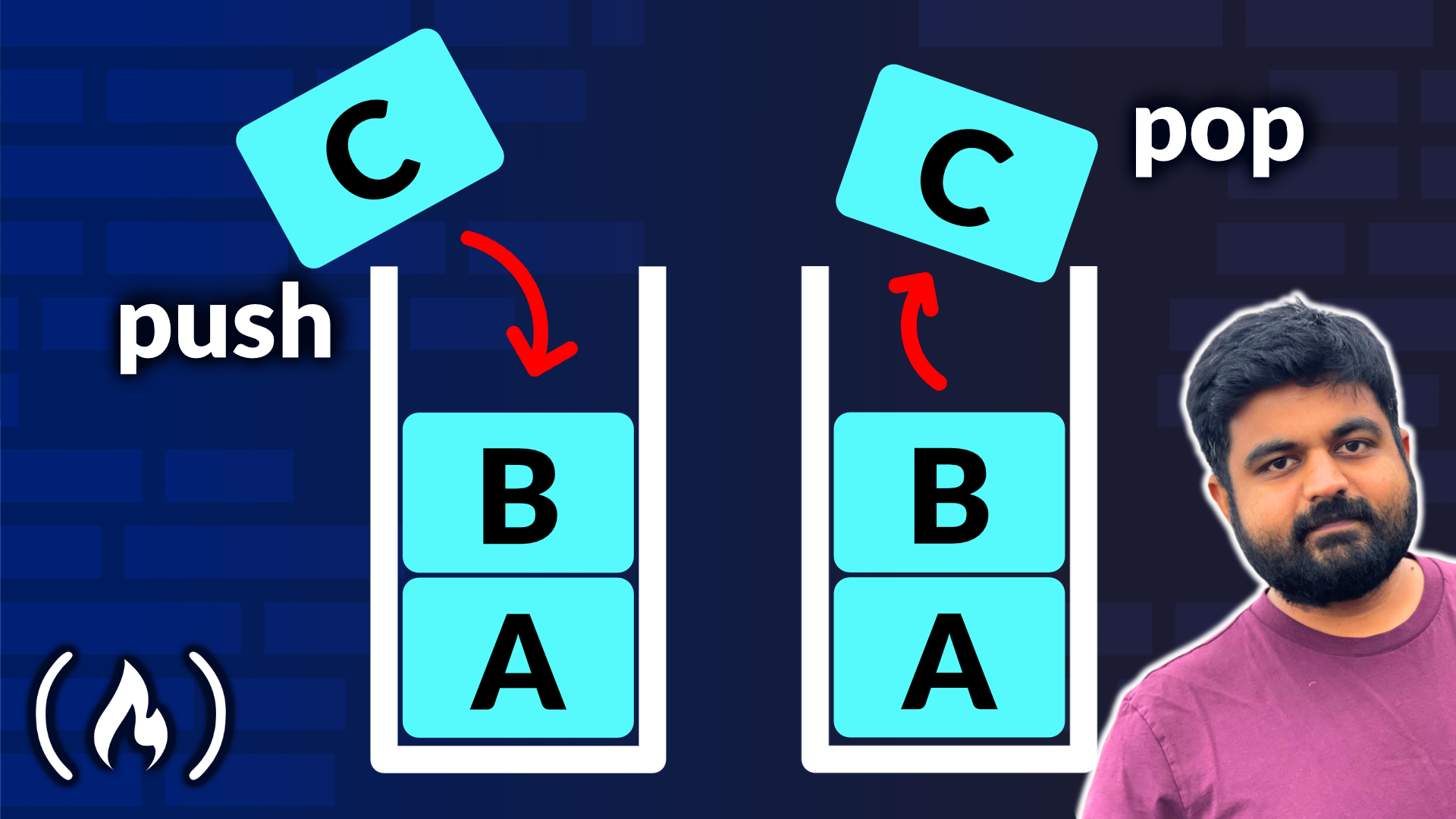Understanding the stack data structure is important for anyone interested in computer science. It is a key data structure used in many programs and also coding challenges. Understanding stacks can help you in technical interviews.
We just posted a course on the freeCodeCamp.org YouTube channel that will help you master the stack data structure. The course is a deep dive into one of the most fundamental and powerful data structures in computer science. Parth from Destination FAANG developed this course.
Stacks are dynamic data structures that follow the Last In, First Out (LIFO) principle, where the last element added to the stack is the first one to be removed. This course, enriched with diagrams and code examples, will provide you with a solid understanding of stacks and prepare you to ace those crucial interview questions.
Here are the sections in the coruse:
Introduction to Stacks
The course begins with an introduction to the stack data structure, explaining its LIFO nature and its analogy to a stack of plates. You'll learn about the basic operations of push (adding an item to the top), pop (removing the top item), and peek (viewing the top item without removing it), illustrated with Java examples:
Stack<Integer> stack = new Stack<>();
stack.push(10); // Pushes 10 on the stack
stack.push(20); // Pushes 20 on the stack
stack.pop(); // Removes the top item (20)
int top = stack.peek(); // Returns 10 without removing it
Implementation, Operations, and Use Cases
This section covers the internal workings of stacks, showcasing how to implement a stack in Java using arrays or linked lists. You'll explore advanced stack operations and delve into practical use cases, such as undo mechanisms in text editors, parsing expressions, and backtracking algorithms.
When to Use Stacks
Understanding when and where to apply stacks is crucial. This part of the course will guide you through scenarios where stacks shine, including function call management, syntax parsing, and maintaining histories in applications.
Ace Your Interviews with These Stack Questions
The course includes a dedicated section to prepare you for interviews, focusing on the 10 most popular stack-related questions. Each problem is broken down, explained, and solved with Java code to enhance your problem-solving skills and stack understanding.
- Daily Temperatures: Learn how to use a stack to find the number of days until a warmer temperature.
- Evaluate Reverse Polish Notation: Decode and evaluate expressions in Reverse Polish Notation using stacks.
- Valid Parentheses: Use a stack to check for the validity of parentheses in a string.
- Min Stack: Design a stack that supports push, pop, top, and retrieving the minimum element in constant time.
- Generate Parentheses: Discover how to generate all combinations of well-formed parentheses with stacks.
- Car Fleet: Understand how to apply stacks to solve complex problems like the car fleet challenge.
- Minimum Remove to Make Valid Parentheses: Use stacks to balance parentheses in a string efficiently.
- Largest Rectangle in Histogram: Tackle this classic problem with a stack-based approach to find the largest rectangular area.
- Longest Valid Parentheses: Learn to use stacks to find the length of the longest valid parentheses substring.
- Max Stack: Design a max stack that supports all regular stack operations along with retrieving the stack's maximum element.
Your Path to Stack Mastery
By the end of this course, you'll have a deep understanding of stacks, equipped with the knowledge to implement and utilize them effectively in various scenarios. Whether you're preparing for an interview or looking to solidify your understanding of data structures, this course offers a comprehensive guide to mastering stacks with real-world applications and interview-ready questions.
Watch the full course on the freeCodeCamp.org YouTube channel (3-hour watch).
